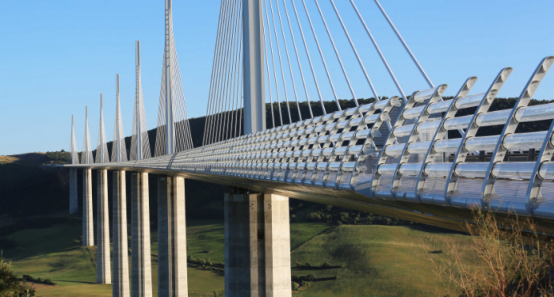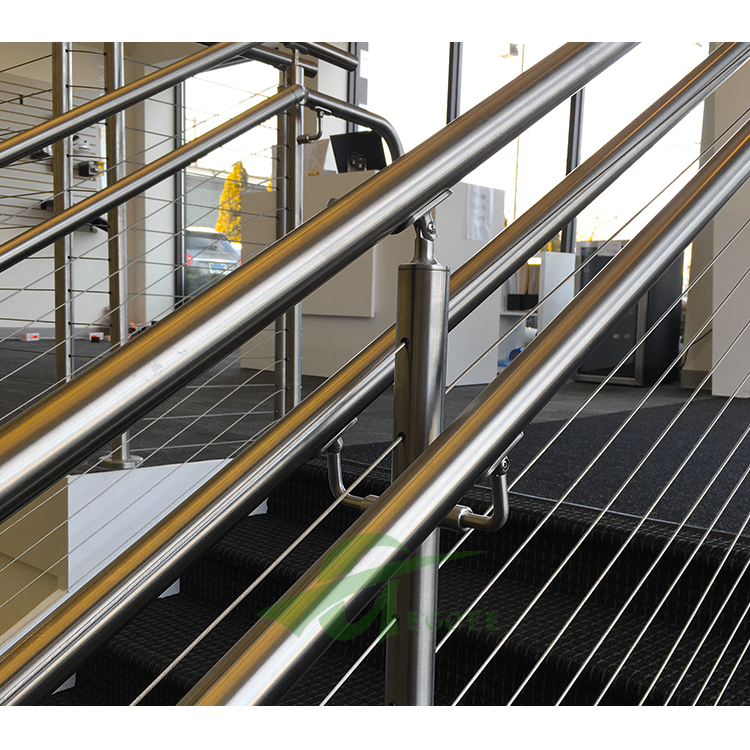Introduction
Welcome to the exciting world of stainless steel material grades!
Stainless steel materials are truly amazing, with unique properties and diverse applications.
In this blog, we will explore the fascinating grades of stainless steel and uncover the secrets that make each one a vital component in modern engineering and design.
Deciphering Stainless Steel Grade
Identities of stainless steel material
1. Stainless steel material is amazing!
It has a secret weapon against rust: its chromium content of at least 10.5% forms a protective layer of chromium oxide on its surface, shielding it from corrosion and oxidation.
2. Strength Beyond Measure
Ever wondered why stainless steel material is trusted in the toughest of conditions? Stainless steel material boasts a tensile strength ranging from 520 to 2,100 megapascals (MPa), depending on the grade.
To put it into perspective, that's like having the strength to lift multiple elephants.
3. Stainless steel material isn't just strong
it's also incredibly versatile! From skyscrapers to surgical instruments, stainless steel finds its way into a wide array of applications.

Understanding Stainless Steel Material Grade
Stainless steel material grades are essentially classifications that define the chemical composition and properties of stainless steel. Think of them as the DNA of stainless steel material - they determine its strength, corrosion resistance, and suitability for various applications.
So why are stainless steel material grades important? Imagine you're a wholesaler sourcing stainless steel products for construction projects.
Understanding the material grades allows you to select the right type of stainless steel for specific applications, ensuring optimal performance and durability.
For engineers working on industrial projects, knowing the material grades is crucial for designing structures that can withstand environmental factors like corrosion and extreme temperatures.
Even for individual entrepreneurs running building material stores, knowledge of stainless steel material grades is invaluable.
It enables them to educate their customers on the quality and suitability of different stainless steel products, ultimately building trust and loyalty.
5 Things Influencing the Selection of Stainless Steel Grades?
1. Which stainless steel my customers prefer?
2. Does it need to have good formability?
3. Does the stainless steel need to be heat treated?
4. Does it need to be welded?
5. What do I think about material continuity and cost?
Which stainless steel my customers prefer?
Consider factors such as their industry standards, specific project requirements, and any feedback or requests they've provided in the past.
Plus, if customers require certification for application-specific specifications, we've got them covered!
Does it need to have good formability?
For optimal formability, we highly recommend selecting an austenitic grade, like 304, or a ferritic grade, like 430. It's important to avoid martensitic stainless steel, such as 410, as it can be brittle and difficult to mold.
The stainless steel need to be heat treated?
Some stainless steel grades require heat treatment to achieve desired properties such as increased hardness, improved machinability, or enhanced corrosion resistance.
If you do need stainless steel that can be heat treated, look for martensitic or precipitation hardened types. Grade 440C and grade 17-4 PH are examples of these heat treatable stainless steels.
Does it need to be welded?
Welding stainless steel is a fascinating process that requires a different approach than welding carbon steel.
However, with the right techniques, you can avoid issues like intergranular corrosion, thermal cracking, and stress corrosion cracking.
If you're welding austenitic stainless steels, we recommend using grades like 304L or 347. 304L grades have a lower carbon content, while 347 grades have added niobium stabilizers to prevent intergranular corrosion.
What do you think about material continuity and cost?
Opting for top-notch austenitic stainless steels might seem like a splurge upfront, but trust me, it's a smart investment!
Practical industrial application scenarios
Let's take a look at the industrial Application Scenarios of Stainless Steel Grades with Historical Context.

1.Empire State Building, New York City, USA
l Stainless Steel Grade: Austenitic Stainless Steel (304)
l Application: Exterior Cladding
l Construction: Built in 1931
The Empire State Building, an emblem of architectural prowess, showcases the durability and aesthetic appeal of stainless steel. Over 200 tons of austenitic stainless steel, primarily Grade 304, were used for its exterior cladding.



2.Millau Viaduct, Millau, France
l Stainless Steel Grade: Duplex Stainless Steel (2205)
l Application: Cable Stayed Bridge Components
l Construction: Completed in 2004
The Millau Viaduct, the tallest bridge in the world, exemplifies the strength and versatility of duplex stainless steel. Grade 2205 stainless steel is ideal for cable stayed bridge components. Approximately 50,000 square meters of duplex stainless steel were used in the construction, ensuring structural integrity.




3.Burj Khalifa, Dubai, UAE
l Stainless Steel Grade: Ferritic Stainless Steel (430)
l Application: Elevator Doors and Interior Decor
l Construction: Completed in 2010
The Burj Khalifa, the tallest building globally, incorporates ferritic stainless steel for its elevator doors and interior decor. Grade 430 stainless steel,provides a sleek and modern aesthetic while withstanding heavy foot traffic. Over 24,000 panels of Grade 430 stainless steel adorn the interiors of this architectural marvel.

3 main types of stainless steel
Welcome to our exciting exploration of stainless steel materials! We are thrilled to delve into the fascinating world of stainless steel grades, focusing on the three main types that form the backbone of the industry.
This understanding will enable you to make informed decisions and meet your customers' needs with confidence and enthusiasm!
A. Austenitic stainless steel
It's made up of iron, chromium, and nickel, along with other elements like manganese and nitrogen.
Popular grades of austenitic stainless steel material include 303, 304, 316, 310 and 321 grades.This unique composition gives it a wide range of useful properties, making it ideal for various applications in different industries.
Plus, its durability and resistance to corrosion make it a top choice for many professionals.
The elements that form austenite can be divided into two categories: chromium-nickel and chromium-manganese.
In chromium-nickel stainless steel, the chromium content must be at least 18% (which belongs to the ferrite formation elements) and the nickel content must be at least 8%, with some grades containing a nickel content of 35-40%.
Pros & Cons
Pros
1. According to industry data, austenitic stainless steel grades such as 304 and 316 exhibit corrosion rates of less than 0.01 mm/year in various corrosive environments. So it has exceptional corrosion resistance.
2. High tensile strength (700–1300 N/mm²). This type of steel is known for its excellent formability, making it super easy to fabricate into all sorts of shapes and sizes.
3. Data from thermal tests demonstrate that austenitic stainless steel retains its strength and corrosion resistance even at temperatures exceeding 1000°C..
Cons
1. Cost:
It is a bit pricier than other stainless steel grades due to its higher nickel content.
2. Susceptibility to Chloride Stress Corrosion Cracking:
Austenitic stainless steel is susceptible to chloride stress corrosion cracking in certain environments, such as containing chlorides like seawater or industrial brines.
The history
In the early 20th century with the groundbreaking work of British metallurgist Harry Brearley.
In 1913, while searching for a corrosion-resistant material for gun barrels, Brearley accidentally discovered stainless steel by adding chromium to low-carbon steel.
This chance discovery led to the development of the first austenitic stainless steel, known as Type 304, which contained approximately 18% chromium and 8% nickel.
The Application Cases
According to a study published in the Journal of Food Engineering, austenitic stainless steel, particularly Grade 316, exhibits excellent corrosion resistance in food processing environments, reducing the risk of contamination and prolonging equipment lifespan.
The Food and Drug Administration (FDA)( recommends the use of austenitic stainless steel for food contact surfaces due to its inert nature and resistance to corrosion, ensuring food safety and compliance with regulatory standards.
B. Ferritic stainless steel

What is Ferritic stainless steel?
It consist of between 10.5% to 30% and a carbon content of less than 0.20%.
Classified in the 400 series grade, other grades are type 405, 409, 434, 436, 442, and 446.
According to data from the International Stainless Steel Forum (ISSF), martensitic stainless steel grades, such as AISI 410 and AISI 420, exhibit tensile strengths ranging from 600 to 1000 MPa, surpassing those of austenitic stainless steels.
Unlike its counterparts, such as austenitic stainless steel, martensitic stainless steel undergoes a transformation during heat treatment imparts these desirable properties.
Pros & Cons
Desirable properties
1. Strong corrosion resistance-it generally displays higher chromium content (up to 30 percent), which provides strong corrosion resistance to ferritic stainless steel.
2. It has exceptional heat resistance, which means it can maintain its mechanical properties even at high temperatures.
3. Magnetic Properties: Ferritic stainless steel is magnetic, which can be advantageous in certain applications, such as magnetic resonance imaging (MRI) machines and magnetic separators.
Cons
Limited toughness - Not acceptable for subzero temperatures.
Formability - Good for deep drawing, but not for stretch forming due to lower ductility.
Weldability - Rapid grain growth in thick sections (greater than 3 mm) results in poor weld toughness compared to the austenitic.
Advancements and Innovations:
Throughout the 20th century, advancements in metallurgy and manufacturing processes propelled the development of ferritic stainless steel.
In the 1920s and 1930s, researchers focused on optimizing the composition of stainless steel alloys to enhance corrosion resistance and mechanical properties.
By the mid-20th century, ferritic stainless steel had become a staple material in various industries, including automotive, construction, and household appliances.
The application cases
The global automotive stainless steel market, including ferritic stainless steel, is expected to reach $7.35 billion by 2026, growing at a CAGR of 3.9%, according to Grand View Research.
Ferritic stainless steel grades such as 409 and 439 are preferred choices for automotive exhaust systems due to their excellent heat resistance, corrosion resistance, and cost-effectiveness.
The global architectural stainless steel market is expected to grow at a CAGR of 5.2% from 2023 to 2028, driven by urbanization, infrastructure development, and increasing investments in sustainable building materials, according to Fortune Business Insights.
C. Martensitic stainless steel
Exploring Martensitic Stainless Steel: Unraveling its Strengths and Applications
It's made up of chromium, which usually accounts for 11.5-18% of its composition. Other common components include up to 1.2% carbon, and nickel.
Popular grades of Martensitic Stainless Steel is 410 Stainless Steel, 420 Stainless Steel, and 440A.
These martensitic stainless steels react to heat treatment much like high carbon steel alloys.

Pros & Cons
Pros
High Strength: Martensitic stainless steel boasts exceptional strength, making it ideal for applications requiring robustness and durability.
Its strength-to-weight ratio makes it a preferred choice in industries such as automotive and aerospace.
Hardness: It can be hardened through heat treatment, resulting in increased hardness and wear resistance. This property makes it suitable for manufacturing cutting tools, knives, and industrial equipment subjected to abrasive wear.
Magnetic Properties: This magnetic property also makes it suitable for applications such as magnetic resonance imaging (MRI) machines and magnetic closures.
Cons
Difficult to weld, limited corrosion resistance and more prone to cracking.
The History
Did you know the characteristic body-centered tetragonal martensite microstructure was first observed by German microscopist Adolf Martens around 1890?
In 1912, Elwood Haynes applied for a U.S. patent on a martensitic stainless steel alloy.
This patent was not granted until 1919.
The application cases
Docol 1700 martensitic is the material of choice for Ultra High Strength Steel UHSS applications including side impact beams, bumpers, structural components and electric vehicle battery housings.
Martensitic stainless steel finds applications in the production of tools, dies, molds, and various components subjected to high mechanical stress and wear.
For example, its grades such as AISI 440C are used in the manufacturing of bearings, valves, and pumps, where hardness, toughness, and corrosion resistance are critical for ensuring reliable operation in demanding environments.
Competition between different levels

Austenitic Stainless Steel Grades 304 VS 316
Tensile strength
l 304 Stainless Steel: Grade 304 typically exhibits a tensile strength in the range of 515-690 MPa (74,900-100,000 psi). This grade offers excellent formability and weldability, making it suitable for a wide range of applications in various industries.
l 316 Stainless Steel: Generally possesses a higher tensile strength compared to grade 304. It typically exhibits a tensile strength in the range of 515-690 MPa (74,900-100,000 psi), similar to grade 304, but with improved corrosion resistance properties.
Max working temperature
l 304 Stainless Steel: Grade 304 exhibits good oxidation resistance and maintains its mechanical properties at temperatures up to 870°C (1,598°F).
l 316 Stainless Steel: 316 stainless steel offers enhanced heat resistance compared to grade 304, thanks to the presence of molybdenum. It maintains its mechanical properties at temperatures up to 925°C (1,697°F).
Ferritic Stainless Steel Grades 430 VS 409
Tensile strength
l 430 Stainless Steel:Typically exhibits a tensile strength in the range of 450-600 MPa (65,300-87,000 psi). This grade offers good corrosion resistance, formability, and heat resistance.
l 409 Stainless Steel: With its lower chromium content and the addition of titanium, generally possesses a slightly lower tensile strength compared to grade 430.
It typically exhibits a tensile strength in the range of 380-560 MPa (55,100-81,200 psi).
Max working temperature
l 430 Stainless Steel: It exhibits good resistance to oxidation and maintains its mechanical properties at temperatures up to 815°C (1,499°F). It is suitable for applications involving moderate heat exposure, such as automotive components, kitchen appliances, and architectural features.
l 409 Stainless Steel: It offers similar heat resistance to grade 430, maintaining its mechanical properties at temperatures up to 815°C (1,499°F). It is commonly used in automotive exhaust systems, where exposure to high temperatures from engine exhaust gases is a concern.
Martensitic Stainless Steel Grades 410 VS 420
l Alloy 420 has higher carbon content than Alloy 410 which is designed to optimize strength and hardness characteristics.
Tensile strength
l 410 Stainless Steel: Grade 410 typically exhibits a tensile strength in the range of 480-600 MPa (69,600-87,000 psi). It suitable for applications requiring wear resistance, such as cutlery, surgical instruments, and valves.
l 420 Stainless Steel: 420 stainless steel, with its higher carbon content and the addition of chromium. It typically exhibits a tensile strength in the range of 700-950 MPa (101,500-137,800 psi), offering superior hardness and wear resistance properties.
Max working temperature
l 410 Stainless Steel:It exhibits good resistance to oxidation and maintains its mechanical properties at temperatures up to 760°C (1,400°F).
It is suitable for applications involving moderate heat exposure, such as automotive components, fasteners, and industrial equipment.
l 420 Stainless Steel:It offers enhanced heat resistance compared to grade 410, thanks to its higher carbon content and chromium content.
It maintains its mechanical properties at temperatures up to 650°C (1,202°F), making it suitable for applications subjected to elevated temperatures, such as turbine blades, surgical instruments, etc.
Conclusion
By understanding these distinctions, wholesalers, contractors, and individual entrepreneurs can make informed decisions when selecting the most suitable stainless steel grade for their specific applications.

Final Thoughts
The Significance of Choosing the Right Stainless Steel Grade?
Ensure durability, cost-effectiveness, performance in specific environments or enhanced aesthetics, especially in building construction.
For example, grade 316 stainless steel is commonly used for external cladding and architectural features in coastal regions, where exposure to saltwater and harsh weather conditions requires superior corrosion resistance.
Forward Momentum: Recommendations for Harnessing Stainless Steel Grades' Potential
Know What You Need: Figure out what you're using stainless steel for.
Pick the Right Stuff: Choose the stainless steel type that fits your needs best, like one that fights rust or one that's super tough.
Check How Strong It Is: Make sure the steel can handle whatever you're throwing at it.
Think About Flexibility and Heat: See if it can take the heat and bend the way you want it to.
Keep Costs in Mind: Balance quality with price so you get the best bang for your buck.
Stay in the Loop: Stay updated on the latest stainless steel trends and tech.
FAQ About The grades of stainless steel material
What is stainless steel heat treatment?
Through carefully controlled heating and cooling procedures, the structure and characteristics of stainless steel can be modified to meet specific requirements.
How Should Stainless Steel Materials Be Maintained and Cared For?
Regular Cleaning, Avoid Harsh Chemicals, Use Soft Cloths, Remove Stains Promptly, Protective Coatings, Avoid Exposure to Chlorides.
Is Stainless Steel Materials Sustainable?
Stainless steel is a fantastically green material because it is 100% recyclable.





































